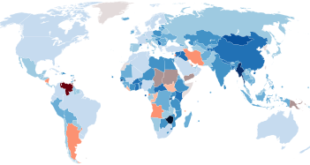CONTEXT:
The Uttar Pradesh (UP) government is working to connect Tharu villages in the districts of Balrampur, Bahraich, Lakhimpur and Pilibhit bordering Nepal, with the home stay scheme of the UP Forest Department.
MAIN POINTS:
- The idea is to offer tourists an experience of living in the natural Tharu habitat, in traditional huts made of grass collected mainly from the forests.
- This is expected to create jobs and bring economic independence for the tribal population.
- Meaning of ‘Tharu’: The word tharu is believed to be derived from sthavir, meaning followers of Theravada Buddhism.
- The Tharu community belongs to the Terai lowlands, amid the Shivaliks or lower Himalayas.
- Terai is a region of northern India and southern Nepal running parallel to the lower ranges of the Himalayas.
- The Tharus live in both India and Nepal. In the Indian terai, they live mostly in Uttarakhand, Uttar Pradesh, and Bihar.
- Tharu is a scheduled tribe in the states of Uttarakhand, Uttar Pradesh and Bihar.
- Most of them are forest dwellers, and some practice agriculture.
CULTURE:
- They speak various dialects of Tharu, a language of the Indo-Aryan subgroup, and variants of Hindi, Urdu, and Awadhi.
- Tharus worship Lord Shiva as Mahadev, and call their supreme being “Narayan”, who they believe is the provider of sunshine, rain, and harvests.
- Tharu women have stronger property rights than is allowed to women in mainstream North Indian Hindu custom.
- Standard items on the Tharu plate are bagiya or dhikri – which is a steamed dish of rice flour that is eaten with chutney or curry – and ghonghi, an edible snail that is cooked in a curry made of coriander, chili, garlic, and onion.
SCHEDULED TRIBES
- Article 366 (25) of the Constitution refers to Scheduled Tribes as those communities, who are scheduled in accordance with Article 342 of the Constitution.
- Article 342 says that only those communities who have been declared as such by the President through an initial public notification or through a subsequent amending Act of Parliament will be considered to be Scheduled Tribes.
- The list of Scheduled Tribes is State/UT specific and a community declared as a Scheduled Tribe in a State need not be so in another State.
- The Constitution is silent about the criteria for specification of a community as a Scheduled Tribe. Primitiveness, geographical isolation, shyness and social, educational & economic backwardness are the traits that distinguish Scheduled Tribe communities from other communities.
There are certain Scheduled Tribes, 75 in number known as Particularly Vulnerable Tribal
Groups (PVTGs), who are characterised by:-
- Pre-agriculture level of technology
- stagnant or declining population
- extremely low literacy
- subsistence level of economy
GOVERNMENT INITIATIVES:
- The Scheduled Tribes and other Traditional Forest Dwellers (Recognition of Forest Rights) Act, 2006 (FRA)
- The Provision of the Panchayats (Extension to the Scheduled Areas) Act, 1996
- Minor Forest Produce Act 2005
- SC And ST (Prevention Of Atrocities) Act
- Tribal Sub-Plan Strategy are focused on the socio-economic empowerment of STs.
SOURCE: PIB
 Chinmaya IAS Academy – Current Affairs Chinmaya IAS Academy – Current Affairs
Chinmaya IAS Academy – Current Affairs Chinmaya IAS Academy – Current Affairs



